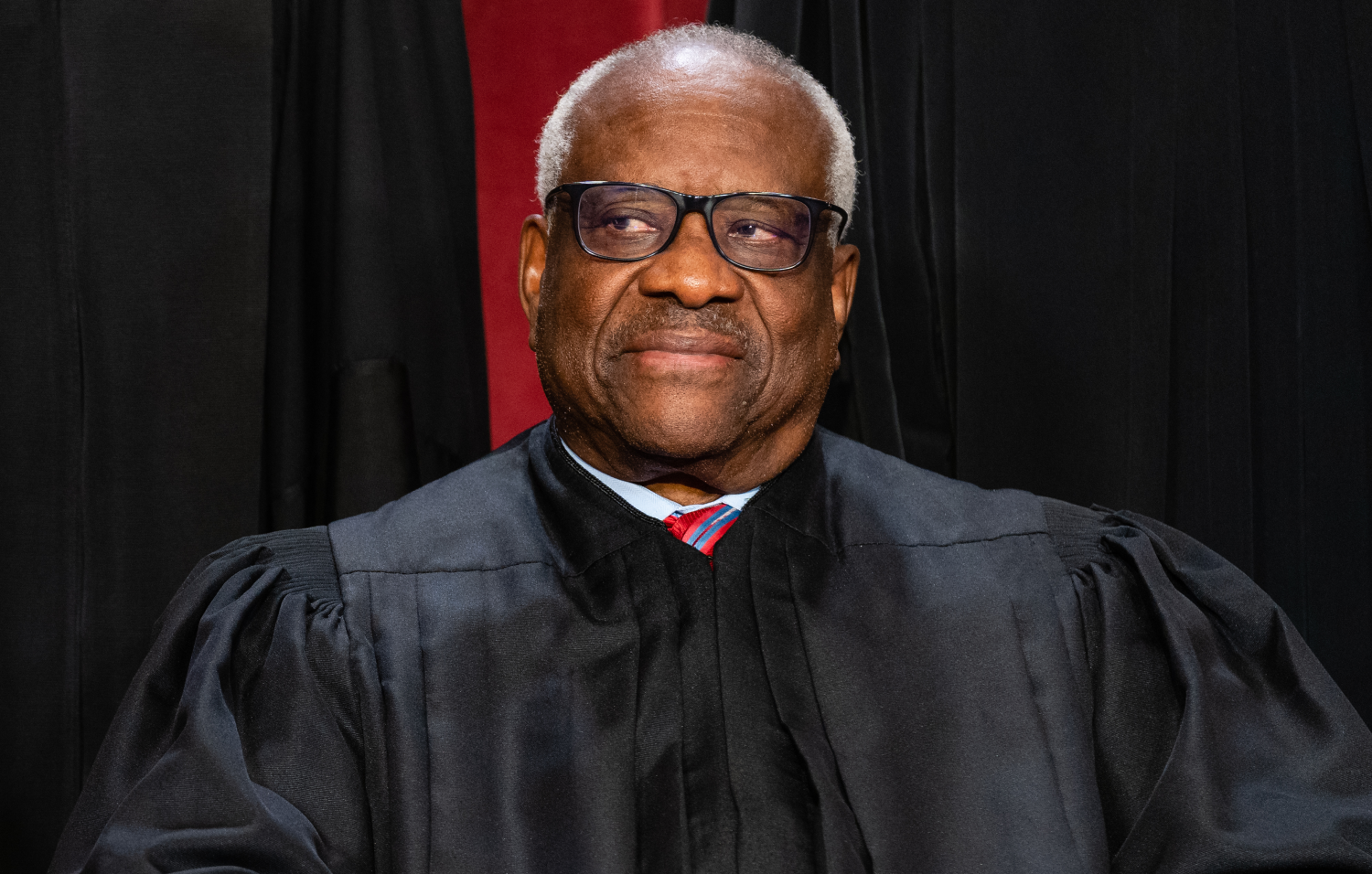Justice Thomas Criticizes Retrial Decision in Hammer Attack Case – Concerns for Victims and Justice System
In a significant development, Justice Clarence Thomas has issued a strong dissent regarding a Supreme Court decision that allows a retrial in a highly publicized Ohio case. The case involves David M. Smith, who was convicted nearly a decade ago for a violent hammer attack on Quortney Tolliver, resulting in severe facial and skull injuries. Smith’s conviction was challenged after the Sixth Circuit Court of Appeals ruled that the eyewitness identification process during his trial was flawed and violated his due process rights. This decision opens the door to a potential retrial, sparking a debate about the balance between protecting victims’ rights and ensuring fair trials for the accused.
I. The Case and the Decision
David M. Smith was convicted for the hammer assault based on evidence including eyewitness testimony and physical evidence. However, the Sixth Circuit found that the method used to identify Smith was too suggestive, which led to the appeals court ruling that his due process rights were violated. This ruling has triggered the possibility of a retrial, raising questions about the fairness of overturning a conviction based on technicalities, particularly when substantial evidence links the defendant to the crime.
Justice Thomas strongly criticized the decision, calling it an overreach of judicial power. He argued that allowing a retrial based on an issue like the identification process undermines the justice system, particularly when other compelling evidence, such as DNA and phone records, strongly ties Smith to the attack. He emphasized that a retrial would cause unnecessary harm to the victim, prolonging their trauma and potentially allowing a dangerous individual to avoid justice.
II. Justice Thomas’s Dissent
In his dissent, Justice Thomas expressed concern over the potential negative consequences of the Sixth Circuit’s ruling. He contended that the court’s decision to allow a retrial based on a technicality could set a troubling precedent. Thomas argued that the retrial would put a victim through additional pain, reopen old wounds, and could lead to an acquittal despite strong evidence against the defendant. He noted that the retrial could waste judicial resources and disrupt public safety by releasing a dangerous individual based on procedural issues rather than the substance of the crime.
Justice Thomas also pointed out that the Antiterrorism and Effective Death Penalty Act (AEDPA), which limits the ability of federal courts to overturn state court convictions except in exceptional circumstances, was not properly considered in this case. He warned that allowing this retrial would weaken the reliability of criminal convictions and create an opening for future cases to be overturned on similar grounds.
III. The Legal Debate
The central issue in this case revolves around whether a retrial should be allowed when the only issue being challenged is the technicality of eyewitness identification, while other evidence strongly supports the defendant’s guilt. The majority opinion from the Supreme Court upheld the retrial, emphasizing the importance of protecting the due process rights of the accused. In contrast, Justice Thomas’s dissent highlighted the rights of victims and public safety, suggesting that reopening cases based on procedural issues rather than the broader evidence against the defendant risks undermining both justice and law enforcement efforts.
Ohio Attorney General David Yost argued that Smith’s original conviction should stand, pointing out the strong evidence linking him to the crime. Yost contended that the Sixth Circuit had overstepped by calling for a new trial based only on issues with eyewitness identification, a point also raised by Justice Thomas.
IV. Implications for Victims and Law Enforcement
The case raises significant concerns for crime victims, particularly in cases involving violent offenses. Justice Thomas warned that a retrial could make it harder to secure a conviction, as the passage of time might lead to faded memories and unavailable witnesses. For victims like Quortney Tolliver, the idea of reliving the traumatic experience in another trial is deeply unsettling. Thomas emphasized that the impact on victims should not be ignored, as they are forced to endure the re-traumatization of recounting painful events.
Law enforcement officials also worry that permitting retrials over technicalities could send the wrong message to criminals. If technical flaws in eyewitness testimony can lead to overturned convictions, it might encourage more crime and diminish the deterrent effect of the justice system.
V. The Future of the Case
While the Supreme Court’s decision allows for a retrial, many questions remain. The case is now set to return to the lower courts for further examination of the facts and legal arguments. Prosecutors are expected to appeal the decision, and legal experts will be watching closely as the case develops. The outcome could influence future legal battles over the extent to which technicalities in criminal procedures can lead to retrials and how courts balance the rights of the accused with the interests of victims and society.
This case is likely to become a focal point for discussions on criminal justice reform, particularly in the context of retrials and the reliability of convictions. The debate will likely center on how to preserve victims’ rights while ensuring that those accused of crimes receive a fair trial.
VI. Conclusion: A Critical Moment for Criminal Justice
The Supreme Court’s decision in the Smith case raises critical questions about how the criminal justice system should handle technical issues in criminal trials. Justice Thomas’s dissent underscores the need to balance judicial oversight with the need for finality and justice for crime victims. As the case moves forward, the broader implications for law enforcement, victims, and the integrity of the criminal justice system will continue to be a topic of intense scrutiny.
This case, along with similar legal challenges, highlights the ongoing struggle to maintain a fair and effective justice system that serves both the accused and the victims of crime. The resolution of this case could shape future legal standards regarding retrials and the protection of constitutional rights, impacting how criminal procedures are handled in the years to come.
